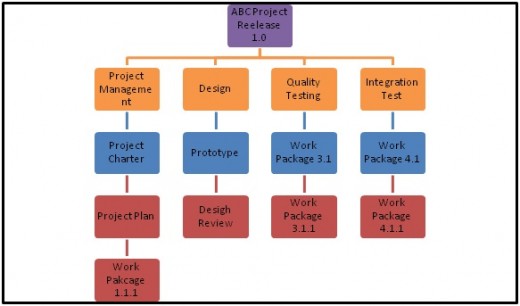The WBS Can Save Your Project From Scope Creep
Scope creep is certainly a nightmare for any project irrespective of the size and domain of it. And when it happens not only the project manager but the entire team along with the stakeholders bears the pain. There are many reasons behind the scope creep; it can be the misunderstanding of complex requirements or addition of new features to the requirements at the later stages of the projects.
Even when you are strictly following the project management processes adhering to the project scope baseline, still there are some circumstances which can make the project out of your control. The addition of new features or changes to the existing can turns your entire schedule into a muddy mess, but you cannot avoid those changes just for the sake of keeping intact the existing scope and schedule. So, it is better to know how to manage and control the changes effectively to avoid any slippage. But before that, let us first discuss some of the common reasons behind any scope creeps.

Why Scope Creep?
The scope is the core of any project around which the projects get developed. But often due to various reasons the scope creep happens and creates havoc in the life of the project team and the managers. Let us discuss some common reasons behind the scope creep.
- Misunderstanding can happen while gathering the requirements at the initial stages from the client which leads to scope creep at the later stages
- Sometimes the client unable to visualize the things hence provides unclear requirements
- Not using the tools and techniques such as Brainstorming, Expert Judgement, Workshops, Surveys etc. while gathering the requirements
- Not putting efforts to build a prototype which can help the customer to visualize and think more clearly on that requirement
- Poor change control process, allowing changes without evaluating the impact of the changes on the project scope, schedule, time and cost
- Allowing Gold Platting by adding extra features just to please the customer
- Inability in decision making due to inadequate freedom for the project managers or working under dominating Sponsors
So far, we have discussed some of the common issues behind scope creep; now let us discuss what WBS is all about and how it helps you to manage your scope and overall schedule of the project.
Work Breakdown Structure (WBS)
The success of the project depends upon how you are tracking all the project activities which can be achievable by closely following your WBS. All the project management activities like planning, estimation of the budget, resource allocation and sequencing of activity durations etc. can be planned with the help of WBS.
The WBS chart along with the WBS dictionary represents the project works on a granular level which can be easy to planning, estimating, and tracking. Thus, it allows the project managers to perform their job more accurately with proper plan and budget when they are able to foresee the upcoming events.

The Creation of WBS:
The creation of Work Breakdown Structure (WBS) is a crucial process where the team has to decompose the complex project works into smaller components, which can be easily manageable and easier for planning later.
While creating the Work Breakdown Structure (WBS), the first and foremost work is to decompose the project scope into smaller packages till the lowest level. The following processes can be followed while creating the WBS:
- First, identify the top level scope at the top of the hierarchy
- Then, start decomposing from the top levels
- Simplify the work by breaking them into the subsequent levels and so on
- Decompose till the lowest level which cost and time duration can be estimated and managed
How to Decompose the High-Level Work
The decomposing process is very crucial, shouldn't be taken lightly. It is advisable to consult the experts and take their help while breaking the larger components into smaller ones. The experts may consist of technical people, individual or any group having technical knowledge on the same area, or previously worked on the similar projects, having knowledge of similar historical information or experts.
Also, we can take references from templates and other artifacts preserved in the organization repository or from industry experts having similar project experience.

How to Read The WBS Diagram
In the WBS diagram, the top level represents the high-level work, while the lower levels show the decomposed components in a simplified form. The naming convention for the second level can be used as x.x, while the third level identified as x.x.x.
The WBS created as a hierarchical diagram, so it is not possible to mention the detail descriptions there. So, to understand the details of work packages, another important document is called, WBS Dictionary.
The WBS Dictionary
The WBS dictionary contains the detailed scope, activity, and their scheduled information of each of the components of WBS. The project team utilizes the details from WBS dictionary to understand the WBS. The work package identifiers used in the WBS are mapped to the WBS dictionary to track and found the details.
The Benefits of Work Break Down Structure (WBS):
There are some notable benefits of WBS, they are:
- It helps to estimate the project works more accurately
- Project Budget and Schedule can be more accurately estimated
- Project Managers and other stakeholders can track the schedule of the project in an easier way.
- It helps in assigning the work to the project resources
- Project risk can be foreseen before it happens
At any point in time, the WBS chart can help the stakeholders to see the Project’s progress and the scope covered so far

How to Handle The Changes
The addition of new features or changes in existing features is common in project life cycle. Some changes are introduced by the client while some are included due to the demand of the highly competitive market.
So, the change is inevitable, but a proper change management process can help you to avoid any scope creep. The process is all about the categorization of changes, identifying the impact on the scope, finds out the causes of variances and analyze the impact on schedule, cost, and budget. That information helps the Project Manager to make the decisions on the further course of actions.
How WBS Can Help To Manage The Scope:
While doing the analysis it is important to keep the WBS on the table. Because the WBS can tell you what are the works done so far and what is left. It also helps you to analyze how the addition of new features or changes to the existing features can be handled efficiently with the ongoing work packages.
Based on the information you should compare the changes with your scope baseline and estimate the plan ahead. Do not hesitate to highlight the changes from your baseline and its impact on cost, time, resources and budget. Discuss with the sponsor, partner based on your estimation to buy more time and more budget if needed.

Conclusion:
To avoid the scope creep, while considering the changes, go back to initiation phase and perform the processes again with the new changes. Break the new requirements into work packages, and accordingly, update your Work Breakdown Structure (WBS). Based on that estimate the project schedules, the earlier defined major and minor milestones dates may be changed. So, update them, get them approved, and share with your stakeholders including the client.
Finally, though it is tough to control the scope of the project considering the changes and additions of the new features, there are some documents such as WBS, Project Plan, Risk Register, Stakeholder Register etc. can be proved handy while analyzing the impact of changes and will make your job easy.
Have you used to prepare WBS in your project?
© 2017 Kishor Mohanty








